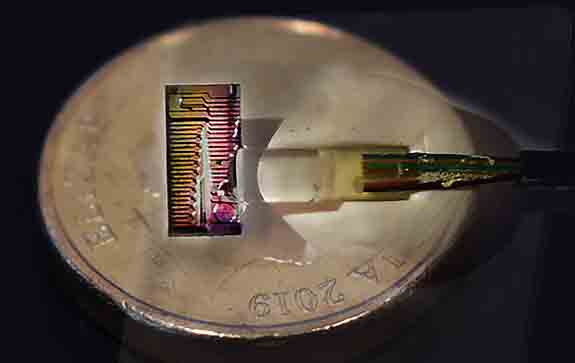An Australian research team has successfully tested and recorded the world’s fastest internet data speed, using an optical micro-comb.
In a collaboration between RMIT, Monash and Swinburne universities, researchers logged a data speed of 44.2 terabits per second (Tbps) – a rate capable of downloading 1000 HD movies in a split second.
The findings, published in Nature Communications recently, are not just good news for Netflix fans but also have the potential to fast-track the next 25 years of Australia’s telecommunications capacity, according to the Director of Swinburne University’s Optical Sciences Centre Professor David Moss.
“This work represents a world-record for bandwidth down a single optical fibre from a single chip source, and represents an enormous breakthrough for part of the network which does the heaviest lifting,” he said.
“Micro-combs offer enormous promise for us to meet the world’s insatiable demand for bandwidth.”
How does it work?
The optical micro-comb creates a rainbow of infrared light, allowing data to be transmitted on many frequencies of light simultaneously.

Researchers placed the fingernail-sized chip onto optical fibres, then simulated peak internet usage by sending maximum data down each channel. The result was a speed around 100 times that of any single device currently used in Australian fibre networks.
While such demonstrations are typically confined to a laboratory, the study involved testing on 76.6 km of ‘dark’ optical fibres between RMIT’s Melbourne City Campus and Monash University’s Clayton Campus, as part of the Australian Lightwave Infrastructure Research Testbed (ALIRT).
“Having RMIT University as the central node of this world-leading communications testbed gives us insight into the challenges and opportunities for next generation fibre optic communications in a real-world setting,” RMIT Distinguished Professor Arnan Mitchell said.
“It also gives us the ability to rapidly test new ideas.”

And with the world’s internet infrastructure recently under pressure with people forced to stay home due to COVID-19 lockdowns across the globe, the breakthrough couldn’t have come at a better time.
“We’re currently getting a sneak peek of how the infrastructure for the internet will hold up in two to three years’ time, due to the unprecedented number of people using the internet for remote work, socialising and streaming,” Monash University Lecturer in Electrical and Computer Systems Engineering Dr Bill Corcoran said.
“It’s really showing us that we need to be able to scale the capacity of our internet connections.
“What our research demonstrates is the ability for fibres that we already have in the ground, thanks to the NBN project, to be the backbone of communications networks now and in the future. We’ve developed something that is scalable to meet future needs.”
In the future, the researchers hope to scale up the current transmitters from hundreds of gigabytes per second to tens of terabytes per second.
“Long term, we hope to create integrated photonic chips that could enable this sort of data rate to be achieved across existing optical fibre links with minimal cost,” Mitchell said.
“Initially, these would be attractive for ultra-high speed communications between data centres. However, we could imagine this technology becoming sufficiently low cost and compact that it could be deployed for commercial use by the general public in cities across the world.”



